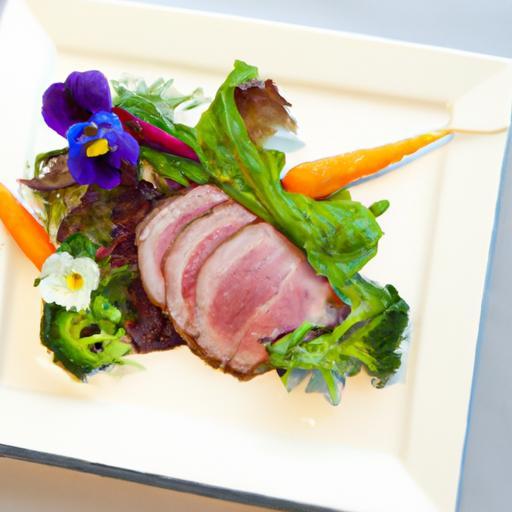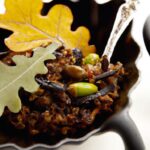In a world where culinary artistry meets scientific precision, sous vide cooking emerges as a deliciously transformative technique, unlocking flavors hidden deep within every ingredient. Imagine sealing your favorite steak or vegetables in a vacuum bag, gently bathing them in a water bath at a precisely controlled temperature, and witnessing the magic as textures turn tender, and tastes intensify. This isn’t just cooking-it’s a perfect harmony of chemistry and creativity. In this article, we’ll dive beneath the surface to explore the fascinating science behind sous vide, revealing how this method elevates everyday meals into extraordinary culinary experiences. Prepare to embark on a flavorful journey where temperature meets technique, and food reaches its full potential.
Mastering Flavor Extraction and Temperature Control with Sous Vide
Unlocking flavor through sous vide cooking allows you to harness the science of precision temperature and ingredient synergy to elevate every dish to perfection. Imagine tender, succulent meats infused evenly with herbs and spices, or vegetables retaining vibrant color and unparalleled texture-this is the magic of controlled heat and meticulous timing.
Prep and Cook Time
- Preparation: 15 minutes
- Cooking: 1 to 6 hours (depending on protein)
Yield
- Serves 4
Difficulty Level
- Medium
Ingredients
- 4 boneless, skinless chicken breasts (about 6 oz each)
- 2 tbsp olive oil
- 3 garlic cloves, smashed
- 4 sprigs fresh thyme
- Salt and black pepper to taste
- 1 lemon, thinly sliced
- Vacuum seal bags suitable for sous vide
- Optional for finishing: butter and fresh parsley
Instructions
- Preheat your sous vide machine to 145°F (63°C) for perfectly tender chicken with a juicy texture.
- Season the chicken breasts generously with salt and pepper. Place 2 sprigs of thyme, garlic cloves, and lemon slices on each breast.
- Drizzle olive oil over the chicken to help infuse flavors and promote a silky mouthfeel.
- Vacuum seal each chicken breast in individual bags, removing as much air as possible to ensure even cooking and optimal flavor extraction.
- Submerge the sealed bags in the preheated water bath, cooking for 1 to 2 hours. The gentle heat breaks down collagen without overcooking, preserving moisture and texture.
- Once cooked, remove the chicken from the bags and pat dry with paper towels to prepare for searing.
- Heat a skillet over medium-high heat and add a small knob of butter. Sear the chicken breasts briefly-about 30 seconds per side-to develop a golden crust without losing juiciness inside.
- Rest the chicken for 5 minutes before slicing. Garnish with fresh parsley for a burst of color and freshness.
Tips for Success
- Ingredient selection: Choose fresh, high-quality meats and aromatics-this impacts the flavor extraction deeply in sous vide.
- Temperature precision: Use an accurate sous vide immersion circulator to maintain steady temperature within ±0.1°C for consistent results.
- Vacuum sealing: Removing as much air as possible is critical; it ensures water contact and effective heat transfer.
- Finishing touches: Don’t skip searing or resting; these add texture contrast and allow juices to redistribute evenly.
- Variations: Experiment with other herbs like rosemary or spices such as smoked paprika for unique flavor profiles.
Serving Suggestions
Serve your perfectly cooked sous vide chicken atop a bed of garlic mashed potatoes or alongside vibrant roasted vegetables. Garnish with a drizzle of infused olive oil or a squeeze of fresh lemon juice for brightness. A leafy salad with vinaigrette balances richness, while crusty artisan bread invites diners to savor every bite.

| Nutrient | Per Serving |
|---|---|
| Calories | 280 kcal |
| Protein | 45 g |
| Carbohydrates | 1 g |
| Fat | 9 g |
Explore more on basic sous vide techniques and deepen your understanding of this exceptional cooking method. For scientific insight, the Journal of Food Science offers comprehensive research on flavor extraction principles.
Q&A
Q&A: Unlocking Flavor – The Science Behind Sous Vide Cooking
Q1: What exactly is sous vide cooking?
A1: Sous vide, French for “under vacuum,” is a culinary technique where food is sealed in airtight bags and cooked in a precisely controlled water bath at relatively low temperatures for extended periods. This method allows for unparalleled control over texture, flavor, and doneness.
Q2: How does sous vide unlock flavors in food differently than traditional cooking?
A2: Traditional cooking often uses high heat, which can cause moisture and flavor to evaporate or escape. Sous vide gently cooks food at its ideal temperature, preventing moisture loss and allowing flavors to intensify and meld from within. Essentially, your food cooks in its own flavorful juices, creating a more vibrant and concentrated taste.
Q3: Why is temperature control so critical in sous vide?
A3: Temperature precision is the heart and soul of sous vide. Because every ingredient has an optimal temperature range for perfect doneness and flavor extraction, maintaining that exact temperature ensures the ideal texture-be it tender steak or silky custard-without overcooking or drying out the food. Think of it as dialing exactly into the sweet spot of taste and texture.
Q4: Can sous vide enhance the nutritional value of food?
A4: Yes! Since sous vide uses lower temperatures and seals food away from air, it reduces nutrient loss that often occurs during boiling or frying. Vitamins and antioxidants are better preserved, making your meal not only more delicious but potentially healthier.
Q5: Does the vacuum sealing step really make a difference?
A5: Absolutely. Vacuum sealing removes air, which slows oxidation and prevents spoilage, helping flavors fuse deeply into the food. It also ensures even heat transfer from the water bath to the food, guaranteeing uniform cooking. Without vacuum sealing, food might float or cook unevenly.
Q6: How long can food safely be cooked sous vide?
A6: Cooking times can range from as little as 30 minutes to 72 hours or more, depending on the ingredient. Lower temperatures mean slower cooking, but safety is maintained as long as the food reaches and stays at a temperature sufficient to eliminate harmful bacteria. The extended cooking time allows tough cuts of meat to become tender without drying out.
Q7: Does sous vide work for all types of food?
A7: Sous vide is incredibly versatile! From meats, seafood, and eggs to vegetables and even desserts, this method enhances flavor and texture across the board. Some delicate items, like fresh herbs or fruits, can release more profound tastes too. However, finishing steps like searing or broiling often complement the final dish by adding texture and color.
Q8: How does sous vide change the way chefs think about cooking?
A8: It introduces a new dimension of precision and patience. Rather than rushing with high heat, chefs embrace slow, steady transformation-experimenting with time, temperature, and seasoning to unlock nuances impossible with conventional methods. It’s science meeting artistry on a plate.
Q9: Is sous vide cooking accessible for home cooks?
A9: Definitely! With affordable immersion circulators and vacuum sealers available today, home cooks can experiment with this technique to elevate everyday meals into restaurant-quality dishes. The process may seem technical at first, but the rewards in flavor and texture make it worth the plunge.
Q10: What’s the biggest “secret” the science of sous vide reveals?
A10: That patience and precision together are flavor’s best allies. By mastering the gentle, focused environment sous vide offers, you unlock taste profiles hidden beneath surface textures, turning ordinary ingredients into extraordinary culinary experiences. In sous vide, science isn’t just about cooking-it’s about coaxing nature’s best flavors to come out and shine.
To Conclude
As the final seconds tick away in your precisely controlled water bath, the magic of sous vide reveals itself-not through flashy flames or sizzling pans, but through the quiet, unyielding science of time and temperature. Unlocking flavor isn’t just about seasoning or technique; it’s about understanding the molecular dance that transforms ordinary ingredients into extraordinary experiences. With sous vide, cooking transcends guesswork and embraces precision, inviting both novice and veteran chefs to rediscover the art of flavor in its purest, most perfected form. So next time you seek that impeccable bite, remember: the secret isn’t just in the recipe, but in the unwavering science that brings it to life.


